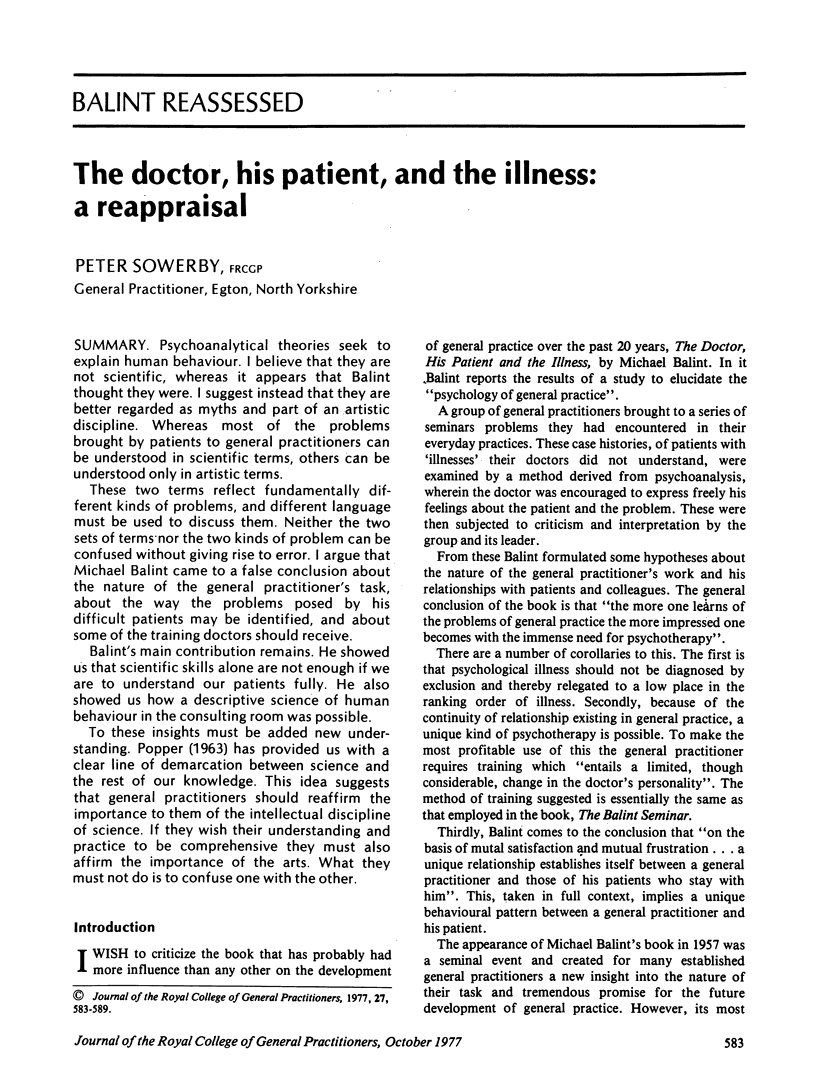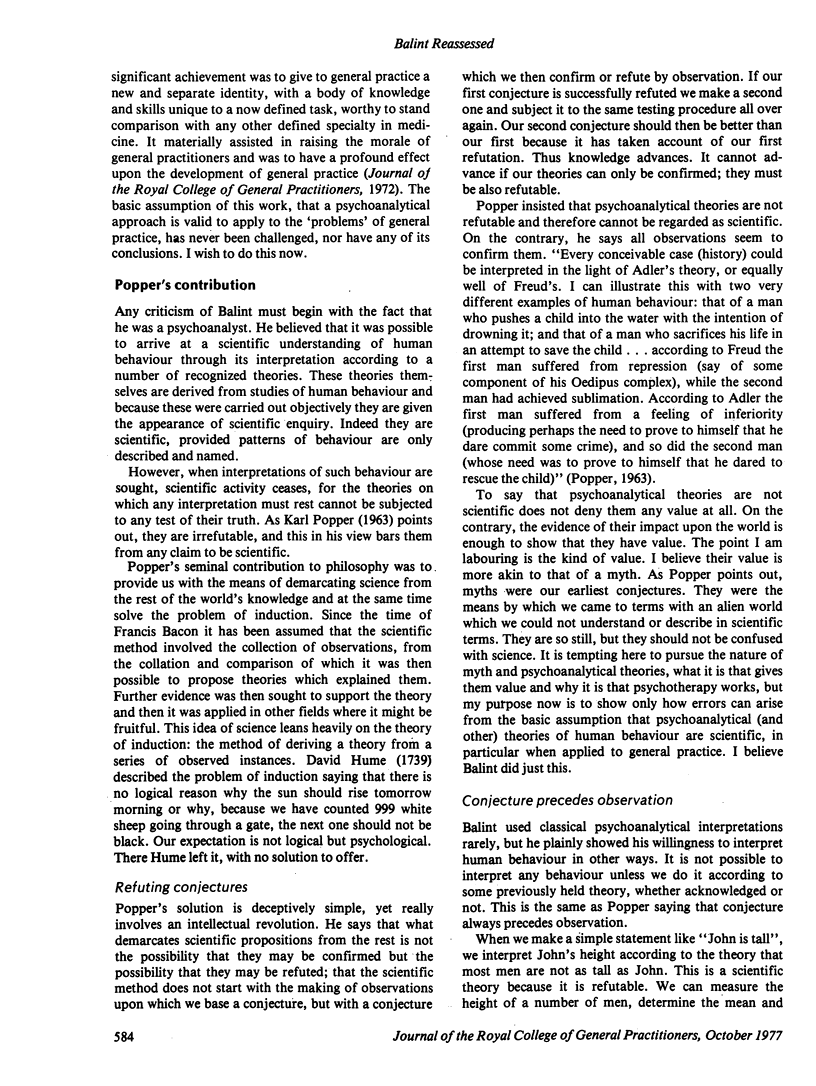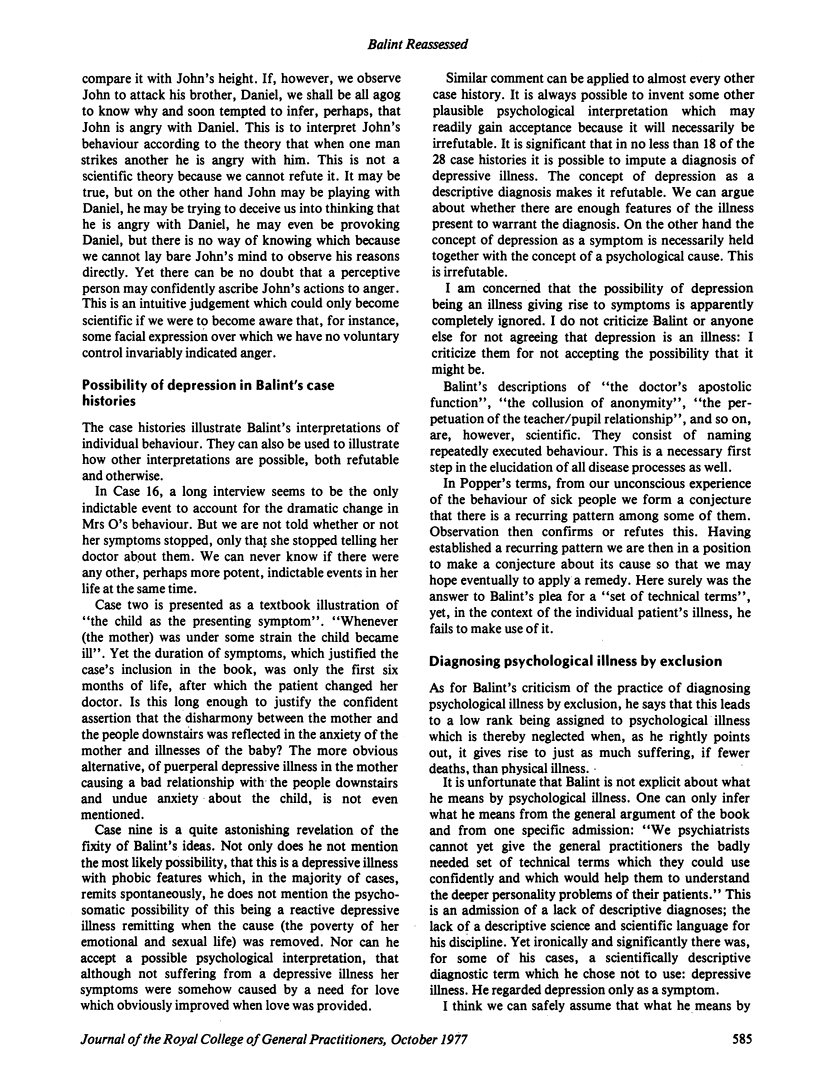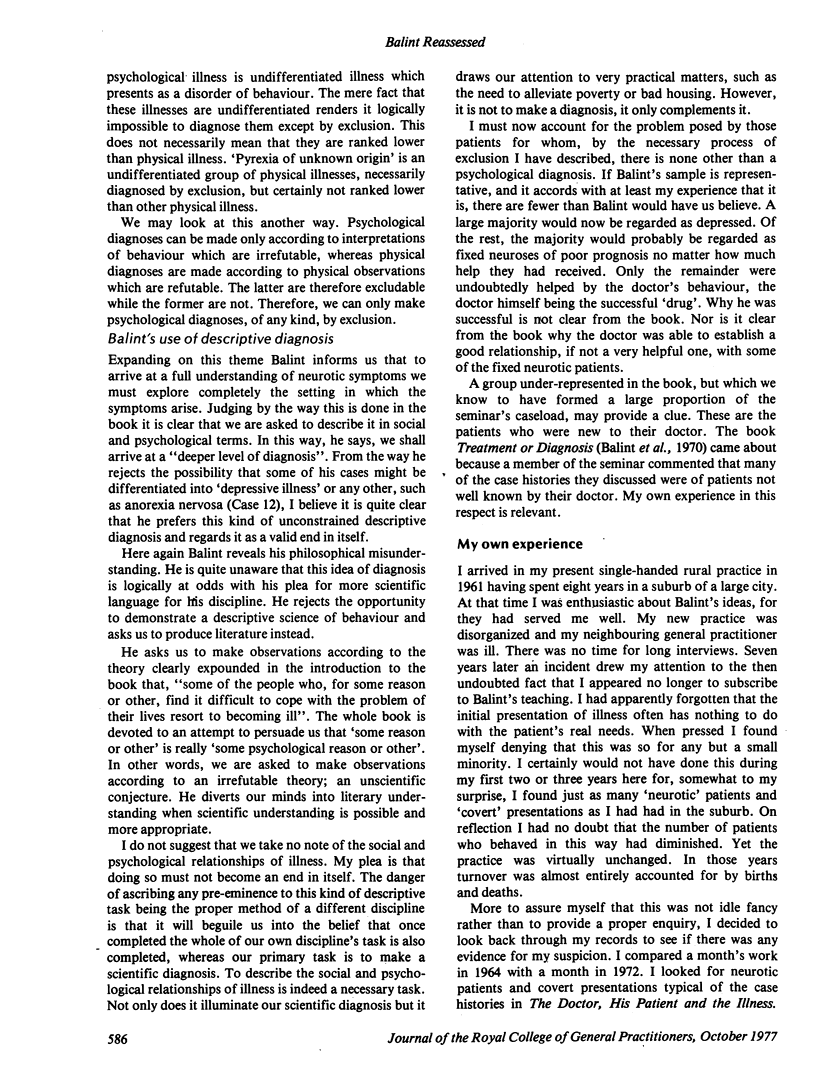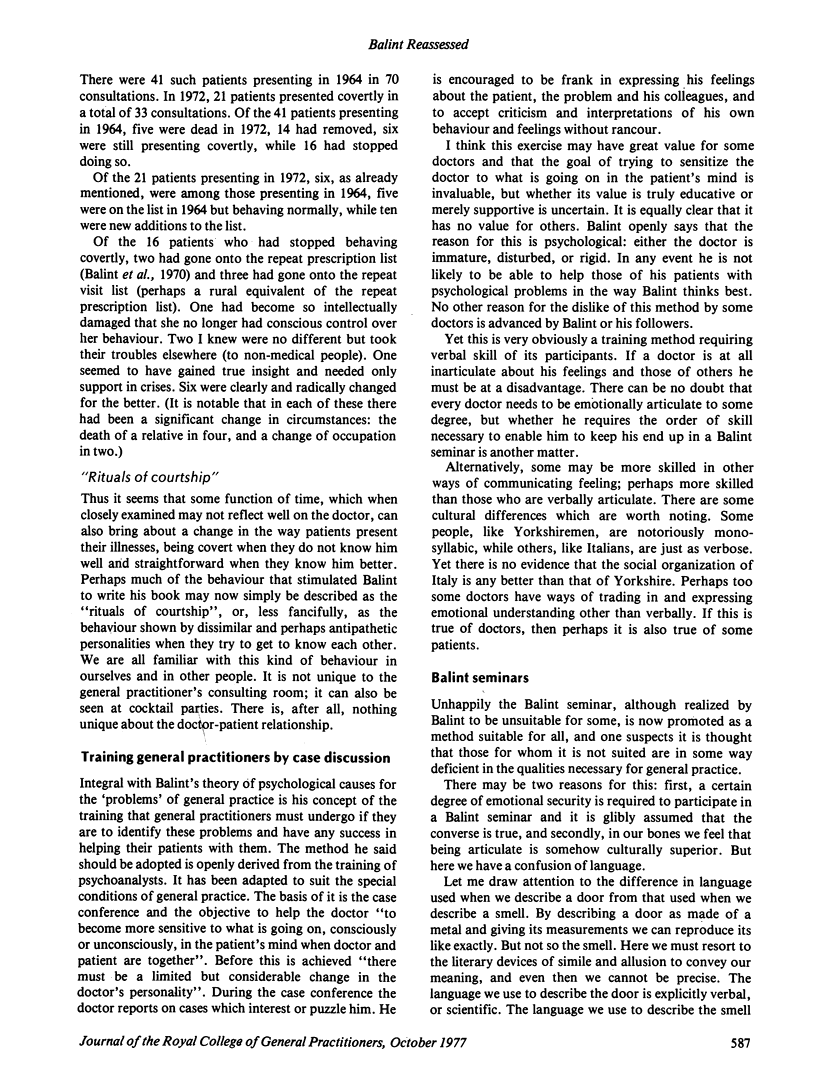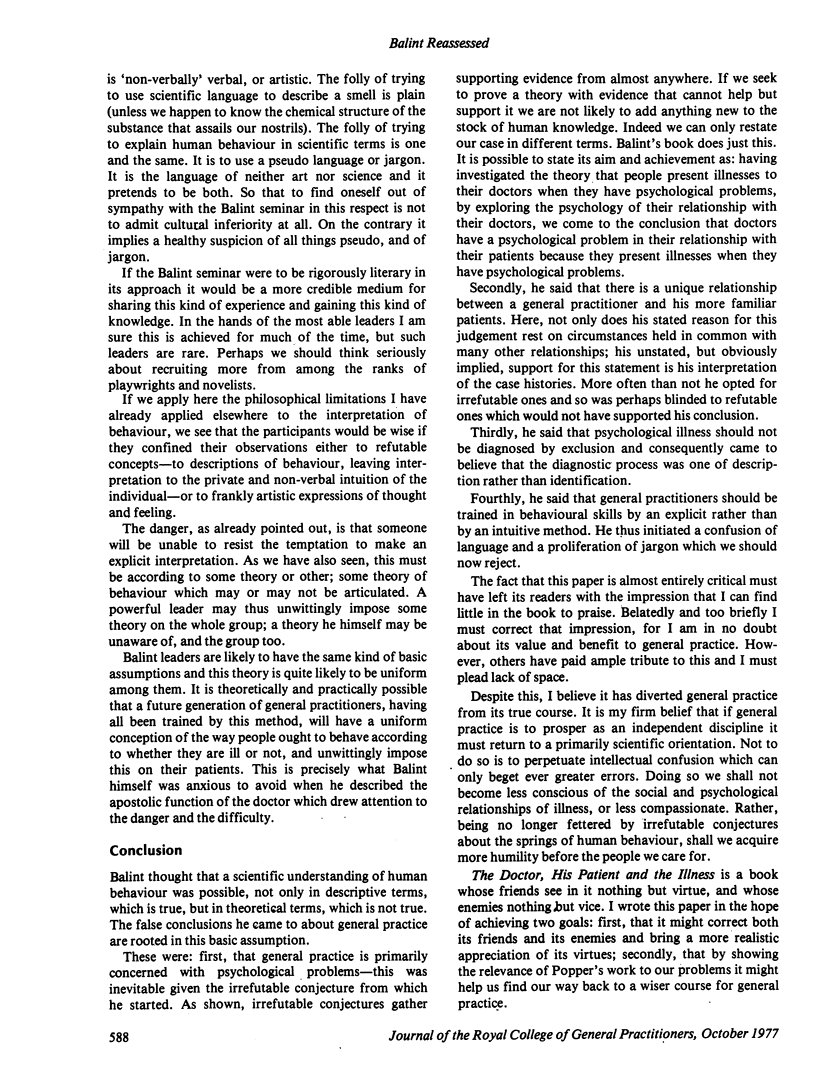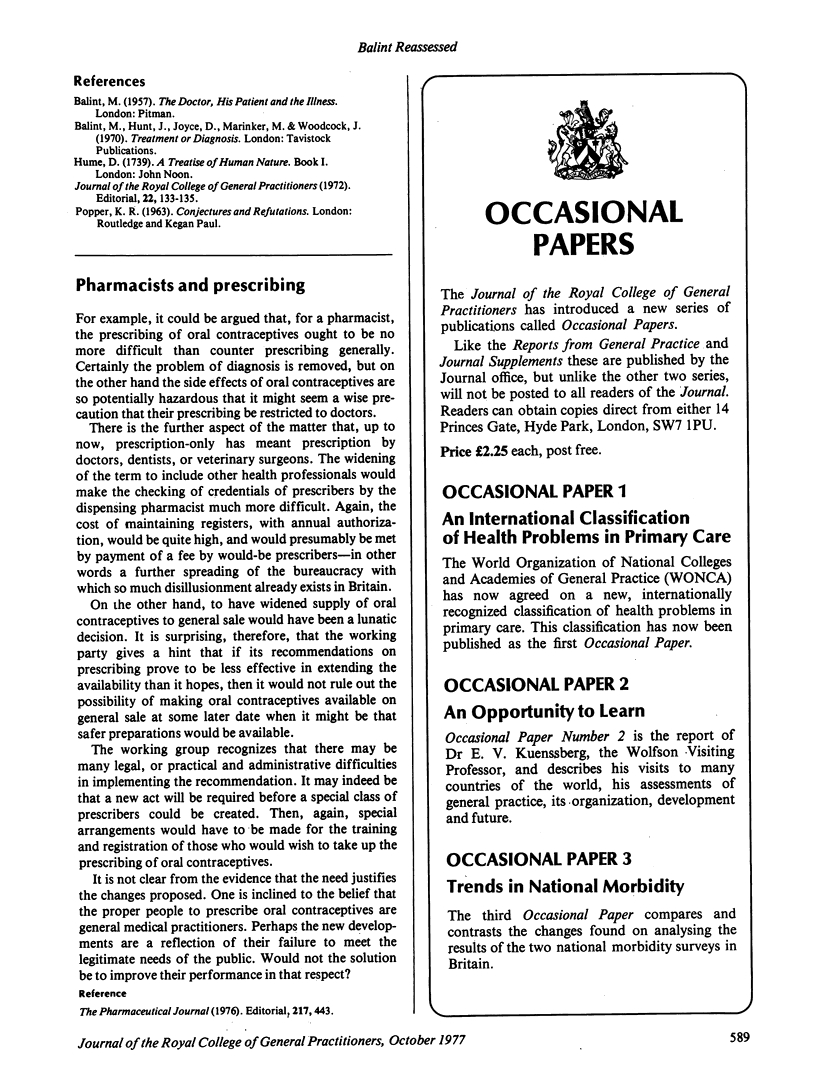Abstract
Psychoanalytical theories seek to explain human behaviour. I believe that they are not scientific, whereas it appears that Balint thought they were. I suggest instead that they are better regarded as myths and part of an artistic discipline. Whereas most of the problems brought by patients to general practitioners can be understood in scientific terms, others can be understood only in artistic terms.
These two terms reflect fundamentally different kinds of problems, and different language must be used to discuss them. Neither the two sets of terms nor the two kinds of problem can be confused without giving rise to error. I argue that Michael Balint came to a false conclusion about the nature of the general practitioner's task, about the way the problems posed by his difficult patients may be identified, and about some of the training doctors should receive.
Balint's main contribution remains. He showed us that scientific skills alone are not enough if we are to understand our patients fully. He also showed us how a descriptive science of human behaviour in the consulting room was possible.
To these insights must be added new understanding. Popper (1963) has provided us with a clear line of demarcation between science and the rest of our knowledge. This idea suggests that general practitioners should reaffirm the importance to them of the intellectual discipline of science. If they wish their understanding and practice to be comprehensive they must also affirm the importance of the arts. What they must not do is to confuse one with the other.
Full text
PDF